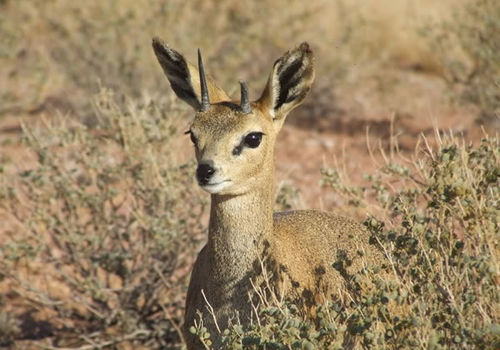
Klipspringer
Oreotragus oreotragusKlipspringer
Introduction: The klipspringer (Oreotragus oreotragus) is one of nature's most unique creatures, through two variations found in no other species of antelope. The first is the hoof structure: the klipspringer (rock jumper) is able to walk on the tip of its hoof because the 'last joint of the digit has rotated'. It also leaves an unmistakable double-rounded spoor, a peculiarity that allows extra grip and provides the klipspringer the ability to climb smooth rock surfaces and jump from boulder to boulder to escape predators.
The second adaptation is its thick, course hair which protects the klipspringer if it falls and provides insulation in extremes of mountain summer and winter temperatures.
Klipspringers travel short distances amongst rocks, often in groups of up to eight. They have a tendency to stop and stand on a rock and watch their pursuer. This works well in the animal kingdom, but unfortunately makes it vulnerable to hunters.
Distribution: In the rocky habitats of the lower Orange River, the Kuiseb River in the Namib Desert, the Namibian central plateau, Damaraland, Kaokoland and at Erongo Wilderness Lodge.
Diet: It feeds on a wide variety of growing shoots, flowers and fruits from herbs and shrubs, but klipspringers are browsers and don't eat grass.
Colouring: The fur of the klipspringer is coarse and thick (hence earlier settlers using it for stuffing saddles) and depending on its habitat, grows as variable shades of brown, yellow, grey or reddish complemented with white underparts.
Breeding: Gestation periods of six months yield a single lamb, evicted from the group after one year. Bonds between males and female are for life.
Size: Females are slightly larger than males standing at 0.5-0.6m high at the shoulder.
Weight:11-13kg
Klein Windhoek

